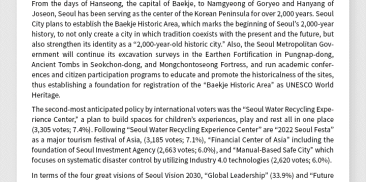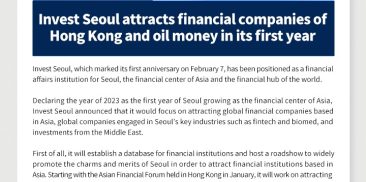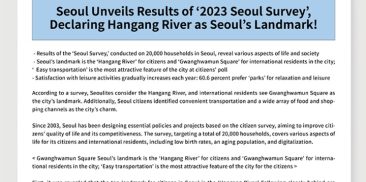ソウルの文化遺産
-
The Daeonsi l (large greenhouse) in Changgyeonggung Palace, a sacrosanct place that was violated by the Japanese
-
ソウルの文化遺産 登録日投稿者SMG ヒット2,339Changgyeonggung Palace is one of the four palaces in Seoul, along with Gyeongbokgung, Changdeokgung, and Deoksugung. Built in 1483 during the reign of King Seongjong, Changgyeonggung Palace is also referred to as “Donggwol (East Palace)”. After the forced abdication of King Gojong, the Japanese launched a project to violate the Korean royal palaces under the pretext of “cheering Emperor Sunjong up”. In Changgyeonggung Palace, they created a zoo and a botanical garden, but first, they built the Daeonsil (large greenhouse). Even long after Korea’s liberation from Japan, Changgyeonggung Palace was a popular recreational area, and was called “Changgyeongwon”. With the relocation of the zoo and botanical garden to Seoul Grand Park in Gwacheon, all the remaining facilities built by the Japanese were torn down. Three years later, in 1986, a small part of Changgyeonggung Palace was restored. In 2004, the Daeonsil was designated as a registered cultural asset, as it is Korea’s first modern-style greenhouse introduced from the West. Among the five royal palaces built during the Joseon period, Changgyeonggung Palace was damaged the most, which, in addition to its architectural value, is another historical reason to preserve the Daeonsil.
Like It
145 人がいいね!と言っています。







